What are the problems associated with cervical spondylosis? How should it be treated?
What are the problems associated with cervical spondylosis? How should it be treated?
Symptoms of cervical spondylosis are panic attacks and insomnia, neck and shoulder pain, headaches, dizziness, loss of vision or blurred vision. Memory loss, there is loss of appetite, nausea and vomiting, weakness of the lower limbs, and in severe cases can lead to paralysis.
Prevention of cervical spondylosis is important such as postural adjustment, local massage, replacement of pillows using cervical pillows, and enhancement of neck muscle exercise.
Treatment of cervical spondylosis is generally categorized into, non-surgical and surgical therapies.
Non-surgical treatments include massage, acupuncture, traction, cupping, moxibustion, small-needle knife and shockwave therapy, internal and external treatments with medications that soothe the tendons and activate the blood and Western medications that relieve heat and pain.
Severe cases, such as the spinal cord type of cervical spondylosis, must require surgery.
Cervical S Spine Doctor, specializing and focusing on cervical spine disease prevention and treatment.
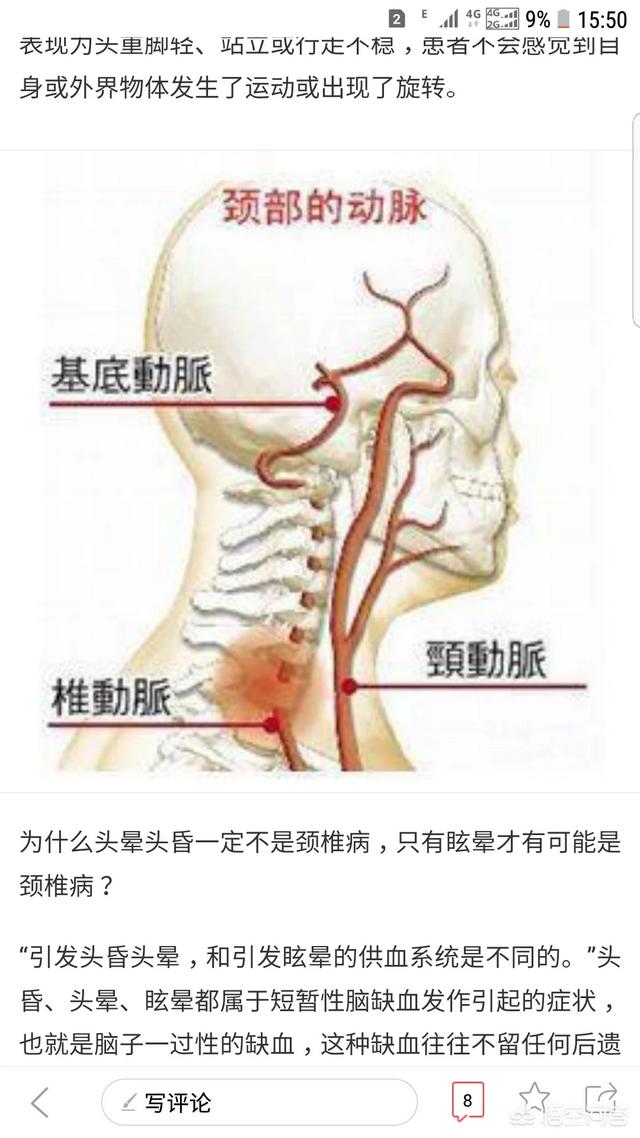
Cervical spondylosis is a very common and serious disease, the sick group is not only the elderly, nowadays many young people also get cervical spondylosis, most of them need to stare at the computer for a long time every day to work, and long term fixed a sitting posture, resulting in the tendons of the neck and shoulder muscles and tendons do not get the appropriate activities, which is prone to cause cervical spondylosis.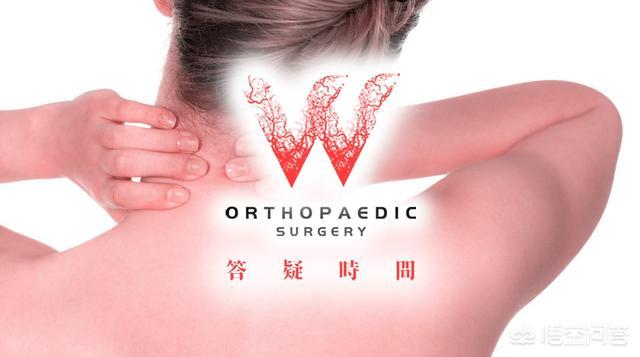
So what are the problems associated with whiplash?
First, cervical spondylosis affects the neck muscles, causing the muscles of the neck to pull on the vascular nerves inside the brain, which can cause head pain as well as dizziness.
Second, cervical spondylosis can also lead to neck and shoulder pain, because the nerves in the neck and shoulder of cervical spondylosis patients will be compressed, thus causing neck and shoulder pain.
Third, cervical spondylosis will also pull on the arm and even the back of the wrist and hand blood vessels and nerves, and may hinder blood circulation, resulting in the emergence of hand numbness or weakness and other phenomena. These are all problems brought about by cervical spondylosis.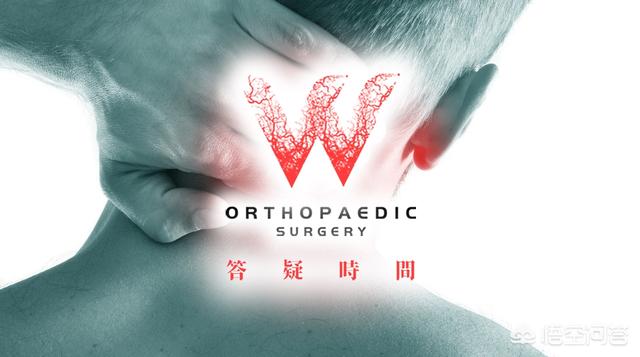
In severe cases of cervical spondylosis, there may also be blurred vision, paralysis of limbs, vomiting and even fainting.
So how should people with cervical spondylosis be treated?
First of all, patients should be clear that any treatment should be carried out under the guidance of a doctor, not blind treatment as well as independent treatment. Treatment can be a combination of Chinese and Western medicine, choose to take some anti-inflammatory painkillers for the neck, but also acupuncture and massage of the neck. Of course, these treatments are basic treatments, and can not cure cervical spondylosis from the root, in order to treat the root cause, the patient should start from the usual life, strengthen the neck and shoulder exercise.
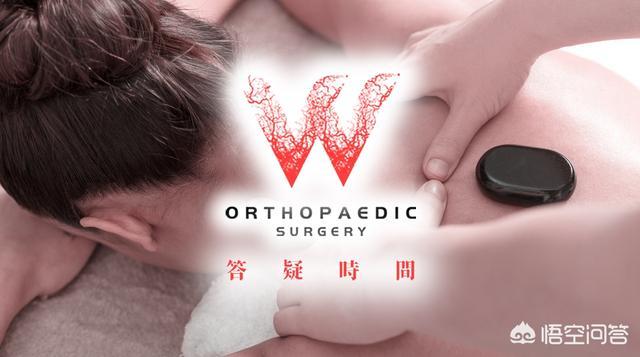 As office workers, it is recommended to appropriately reduce the time to see the computer every day, do not look at the computer for a long time, try to every hour to move the neck, you can also look up at the sky, if possible, you can do a neck exercise. If the elderly, it is recommended to do more exercise, do not stay at home all day, and then usually pay attention to do a good job of keeping the neck warm.
As office workers, it is recommended to appropriately reduce the time to see the computer every day, do not look at the computer for a long time, try to every hour to move the neck, you can also look up at the sky, if possible, you can do a neck exercise. If the elderly, it is recommended to do more exercise, do not stay at home all day, and then usually pay attention to do a good job of keeping the neck warm.
Answer:
First, the cervical spine and the head and brain direct relationship, one is the cervical spine on both sides of the two vertebral arteries upward, through the occipital atlantoaxial part into the (basilar artery) into the skull, supplying intracranial nutrients; second is the sympathetic and parasympathetic nerves directly command smooth muscle (such as the heart, stomach, intestines, etc.); third is the cervical plexus nerve upward connection to the head, the brachial plexus nerves downward connection to the shoulder, arm and hand, etc.; so the cervical vertebrae Department of the lesions will be shadowed by ah the above parts of the each So a lesion in the cervical spine will affect the function of all the above parts of the organization.
Second, vertebral artery-type cervical spondylosis, due to neck soft tissue stiffness, adhesion or occipital atlantoaxial and atlantoaxial joints misalignment (cervical mouth film can be checked for misalignment, and blood flow can be checked for vertebral artery blood supply), compression of vertebral arteries can cause cervical 1-1/2 parts and posterior occipital pain, as well as dizziness, headache (headache or migraine), vertigo, insomnia, memory loss, or in severe cases, cervical hypertension, stroke, and old age Alzheimer's syndrome, etc.; the correct treatment is to loosen the soft tissues of neck and head, promote air and blood circulation, and reset the occipital atlantoaxial joints. The correct treatment is to loosen the soft tissues of the neck and head, promote the circulation of blood and qi, and reset the occipital atlantoaxial and atlantoaxial joints.
Third, sympathetic cervical spondylosis, basically the same as above, but mainly affects the sympathetic nerve function, will lead to such as eye soreness, blurred vision, pain in the precordial area, arrhythmia, nausea and vomiting in the acute stage of the symptoms; treatment methods are the same as above.
Neurogenic cervical spondylosis (CT can be examined), cervical vertebrae 3-7 intervertebral disc (or a section of the herniated) protrudes or small joints are misplaced, and the compression of brachial plexus nerves will cause pain or numbness in the neck, shoulders, arms, elbows, hands and fingers; the treatment is to determine the protruding or erroneous joints and use the method of fixed-point reset, to correct the spinous processes and joints, to promote the disc to return to or to change the position of the nerve root, to relieve the compression; the manipulation of the relaxation of soft tissues in the neck, shoulder, arm and elbow to promote qi and blood circulation. The soft tissues of neck, shoulder, arm and elbow should be loosened to promote the circulation of blood and Qi.
Fifth, cervical cervical spondylosis, cervical soft tissue stiffness, adhesion, hyperplasia (hyperplasia CT can be checked), physiological curvature straightened or reverse arch, etc., affecting the blood circulation in the neck, the metabolism is not good causing pain and discomfort in the neck and shoulder area.
Six, mixed cervical spondylosis, the above two kinds of cervical spondylosis both , the symptoms of both, the treatment method is the same as above.
Seven esophageal cervical spondylosis, hyperplasia forward compression of the esophagus, causing swallowing difficulties; treatment to loosen the soft tissues and hyperplasia parts, prompting the hyperplasia digestion and absorption (as long as the kneading through the circulation of qi and blood to the, qi and blood is omnipotent).
VIII. Spinal cord cervical spondylosis, which is caused by a herniated disc compressing the spinal cord and causing hemiplegia or paraplegia, must be treated in a hospital.
Thank you all! I hope this helps!
Thanks for the invite!
The incidence of cervical spondylosis is getting higher and higher, and the age of onset is getting younger and younger, cervical spondylosis is a kind of disease based on degenerative pathological changes. Cervical spondylosis is a disease based on degenerative pathological changes, which is mainly due to long-term cervical spine strain, osteophytes, or disc prolapse, ligament thickening, resulting in the cervical spinal cord, nerve root or vertebral artery compression, and a series of dysfunctional clinical syndromes.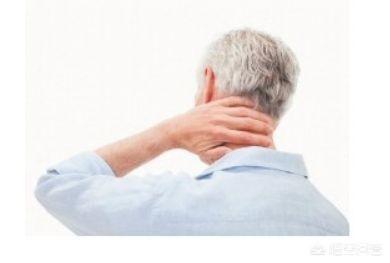
According to the subtypes of cervical spondylosis as well as the symptoms, there are the following main types, cervical cervical spondylosis, nerve root cervical spondylosis, spinal cord cervical spondylosis, vertebral artery cervical spondylosis, sympathetic nerve cervical spondylosis, and esophageal compression cervical spondylosis.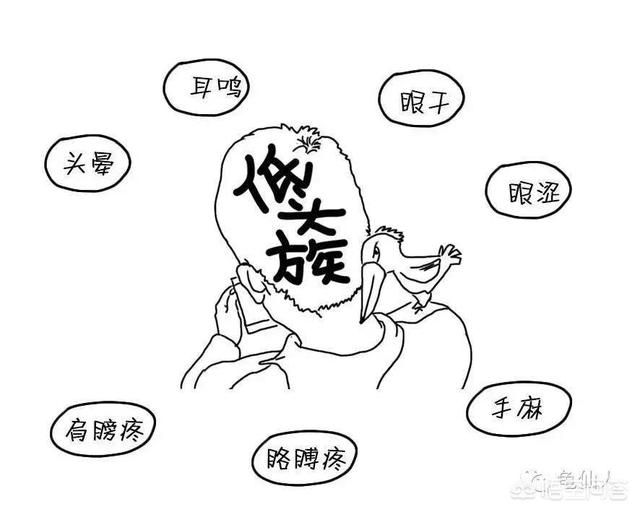
And there are different symptoms according to each of these types. For example, neck pain, such as compression of nerves resulting in upper extremity pain, numbness. Another example is numbness and weakness of the limbs, urinary and faecal disorders. Dizziness, blackout, foreign body sensation in swallowing and so on.
For the treatment of cervical spondylosis, there are mainly the following two treatment options, the first option is conservative treatment, the so-called conservative treatment, the most critical is to pay attention to usually do not work for a long time, do not play with the phone for a long time with the computer, sit for a period of time you can get up to do appropriate activities, do cervical spine stretching activities, you can cross your hands on the back of the neck, the head tilted up to look at the ceiling, you can also go to the hospital to do physiotherapy, do traction. You can also go to the physiotherapy department of the hospital to do physical therapy, do cervical traction, of course, you can usually take some non-steroidal drugs, as well as nutritive nerve drugs.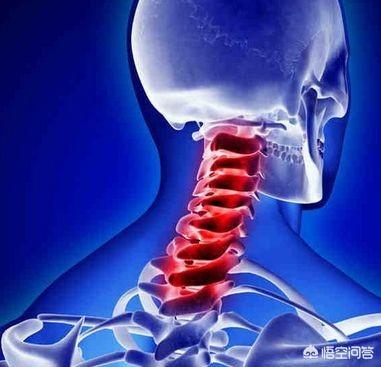
The second option is surgical treatment, for serious cervical spondylosis, if the symptoms are more obvious, conservative treatment is ineffective, caused by the symptoms are getting worse and worse, this situation may have to be surgical treatment, surgical treatment, to release its compression can be a good solution to the symptoms caused by cervical spondylosis.
Cervical spondylosis is a common condition that occurs when the cervical spine is in a state of prolonged strain, leading to disc prolapse, osteophytes and thus making the cervical spine loose and detached.As the cervical spondylosis develops further, it will affect some other peripheral nervous systems as well as the corresponding tissues. How should it be treated?
1, muscle atrophy, difficulty in walking, paralysis of body parts, urinary and bowel disorders, and other different symptoms, which are other symptoms caused by cervical spondylosis.
2. Headache. Because the cervical vertebrae by the reason of cold, as well as sitting and sleeping posture and so on reason is very easy to lead to cervical spondylosis, thus causing headaches. So pay attention to posture, change the work of the bad sitting posture.
3, cervical spondylosis can cause hand numbness, nerves are connected together, posture is not right so that cervical spondylosis occurs will be pressed to the nerves, resulting in hand numbness. So keep adjusting the posture of the head and neck.
In addition to the symptoms that can be caused by cervical spondylosis, there are two types of treatment for cervical spondylosis: conservative treatment and surgery. Conservative treatment includes self-care, medication, and drugs that help relax the neck muscles. Local physical therapy mainly uses traction therapy to cervical spondylosis, and usually pay attention to cervical spondylosis massage to avoid excessive fatigue of the neck. Surgical treatments include anterior surgery and posterior surgery, which are mainly to relieve the function of the nerves.
Find this article useful, please like or recommend to a friend, and follow [Guangdong Orthopaedic Specialist Group]
Cervical spondylosis is one of the several most common ailments in modern times.
There is a high incidence and a wide range of clinical signs, and rarely are two individuals identical.
And because cervical spondylosis is too common, resulting in people's awareness of its crisis is not strong, will rarely be treated at an early stage, only to the impact of daily life and work, will be concerned about, unaware of a small cervical spine, may affect a variety of problems, the most serious or can be fatal and disabling.
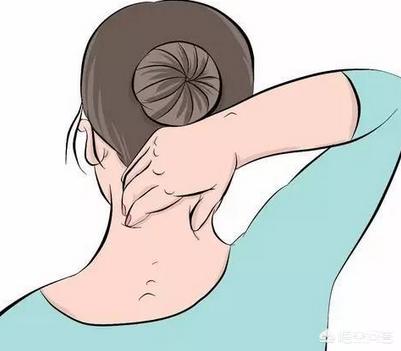
What are the symptoms and diseases that can result from cervical spondylosis?
Head: Intracranial diseases should be the most easily induced by cervical spondylosis, because the cervical spine is in a special position, is the only channel between the torso and the head, once the cervical spine lesions will affect the corresponding nerves and blood vessels, so that the brain occurs insufficient blood supply, which in turn affects the blood and oxygen perfusion of the regional tissues, and once the necrosis occurs a series of clinical symptoms, such as: dizziness, headache, deafness and tinnitus, blurred vision, crooked mouth and eyes, and so on.
Neck: As the fundamental starting point of the cervical spine, once cervical spondylosis occurs, patients will more or less feel abnormalities in the neck, which is generally dominated by pain. When patients get up one day and feel stiffness and soreness in the neck, they need to be vigilant, as this is likely to be the cervical spine giving hints of the condition.
Chest: as the support point of the neck, once the patient's lower cervical spine lesions, it may make the patient appear a series of heart disease symptoms, which is also inseparable from the role of the neurovascular, the most typical disease is coronary artery disease, but due to the more organs in the chest, the patient may also have an impact on the other related organs, the common symptoms of chest pain and tightness of the chest, panic attacks, shortness of breath, arrhythmia, nausea and vomiting, abdominal pain diarrhea, etc.

Treatment of cervical spondylosis needs to be individualized!
Never underestimate cervical spondylosis, which is supposed to be one of the most complex of the many diseases.
It has a large number of clinical classifications, with wildly varying degrees of criticality; some patients can recover on their own even without interventional treatment, while others require immediate treatment, and a slight delay may affect the well-being of the rest of their lives, or even their death.
Many people have the impression that the treatment of whiplash is conservative, but in fact, conservative is only one of the treatments for whiplash, and it is still a relatively elementary perception."Can be conservative without surgery."is a core principle for this type of disease, but few people realize that there is another phrase, and that is"If you want surgery, do it now."Among the many types of cervical spondylosis, one of the more urgent is spinal cervical spondylosis. The prognosis is closely related to the time of treatment, and it is not possible to treat it conservatively at all, and the later the treatment is carried out, the worse the results will be.
We should carry out a thorough assessment of the patient with cervical spondylosis to determine the type and degree of risk and whether surgical treatment is required. If the situation is optimistic or the condition is at an early stage, then conservative treatment is indeed possible, but this is a criterion of judgment that I would recommend resorting to a medical professional rather than judging for yourself, because the degree of cervical spondylosis is rarely determined by symptoms, and there are many patients with unrelated The reason is that the degree of cervical spondylosis is seldom determined by symptoms, and there are many patients with unrelated symptoms that are actually caused by cervical spondylosis, so it is advisable to go to the hospital in time to confirm the diagnosis, and then consider the specific treatment plan.
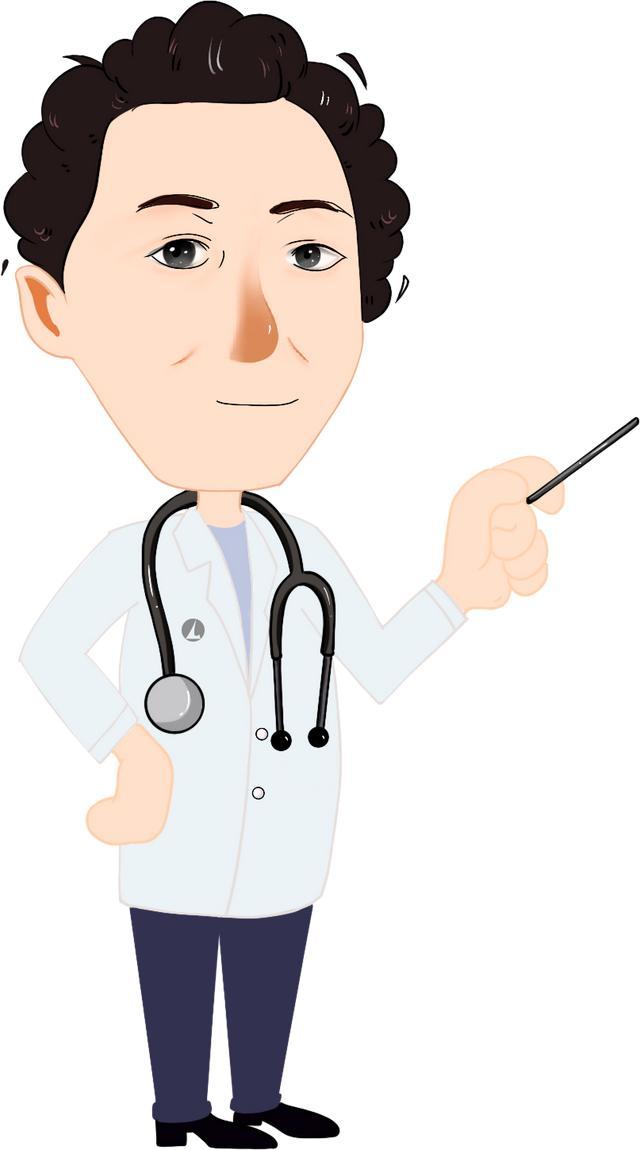
I hope my answer helps you!
If there's anything you don't understand, comment and private message me!
Thank you for the invitation, I'll give a systematic answer below
The first thing to do is to find out if you have whiplash or not.
Cervical spondylosis is a condition in which pain, numbness, or dizziness in the neck and upper arms are the main symptoms caused by degenerative discs, cervical spondylolisthesis, or neck injuries that result in an imbalance of the internal and external balance of the spine and irritation or compression of the spinal nerves, vertebral arteries, spinal cord, and sympathetic nerves. Cervical spondylosis is also known as cervical spine syndrome or neck and shoulder syndrome. It is a common and frequent disease among the elderly.However, the modern trend of cervical spondylosis gradually tends to young people, and this phenomenon has a lot to do with long-term neck strain. The disease is common in long-term ambulatory workers, such as accountants, teachers, typists, and most most commonly, most people who play with cell phones.
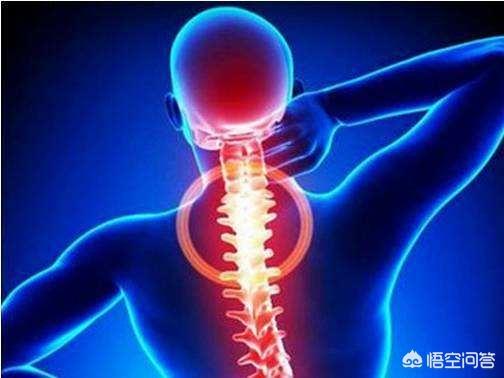
What are the signs of cervical spondylosis?
Cervical spondylosis is a complex medical condition that can be categorized into localized cervical spondylosis, nerve root cervical spondylosis, spinal cord cervical spondylosis, vertebral artery cervical spondylosis, sympathetic cervical spondylosis, and mixed cervical spondylosis.
(1) Localized cervical spondylosis: the mainIf the neck pain is due to torn ligaments in the neck muscles, small joint capsule impingement, or muscle spasms due to nerve root irritation.The main manifestation is neck pain, occipital is the back of the head or shoulder pain.Neck muscles are stiff, head and neck movement is limited, and the head is often restricted to one position or range of motion. At times it is often necessary to support the jaw with the hand to relieve the pain.
(2) Neurogenic cervical spondylosis:Formation is due to a cervical disc herniation favoring the sideThe nerve root is being compressed.That's why you get arm pain or numbness in your fingers., people over the age of 30 who work with their heads down for long periods of time or play with their cell phones are prone to this type of whiplash.Clinically, it can be manifested as neck, shoulder and back pain, occipital and posterior occipital pain, which can radiate to the arms or fingers. In mild cases, it is persistent pain and swelling, in severe cases, it can be manifested as cut-like, needle-like pain, and in more severe cases, touching the forearm will cause electric shock. The pain increases when the neck is stretched back, or when coughing, sneezing, or straining to defecate. There is also a part of the person will be manifested as hand weakness, heavy feeling the latter can not hold things, this situation should be considered whether there is spinal cord compression. If there is tinnitus, dizziness, smoldering, blurred vision, headache, blurred vision, etc., this situation is often accompanied by symptoms of the vertebral artery, and further examination should be done.If it's just vertebral proliferation you can check DR, severe disc herniation do cervical spine CT, if you consider spinal cord compression, it's time to do MR.
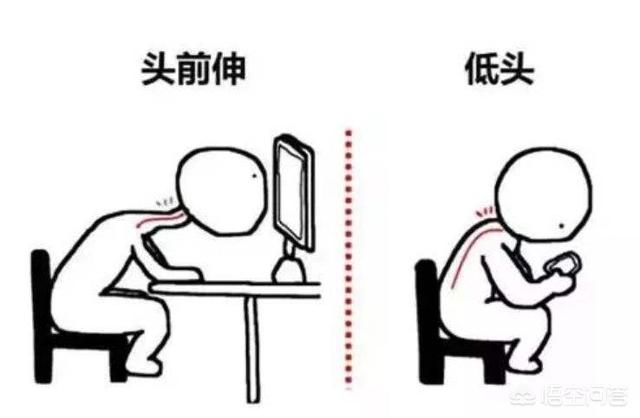
The following is a systematic description of the following spinal cord cervical spondylosis
(3) Spinal cord cervical spondylosis: i.e.A prolapsed disc causing symptoms of spinal cord compression occurs in the 40-60 year olds, often in multiple segments, and is characterized by chronic progressive quadriplegia.In the early stages, there is bilateral or unilateral tightness, numbness, pain, stiffness and trembling in the lower limbs, weakness, weakness in the legs, or tripping and stumbling on the road, walking clumsily, or walking as if you were stepping on cotton;Weakness of hand muscles, trembling and hardness, inflexibility in movement, severe inability to thread needles, hold things and drop them easily.In severe cases, there is quadriplegia, urinary retention or incontinence, and bedriddenness.
This type of cervical spondylosis is more serious, but it is less common for it to be severe enough to paralyze.
(4) Vertebral artery cervical spondylosis:The most typical manifestation of this is a receding neck or a tilted head.Sudden onset of vertigo when turning the head, or even sudden collapse. Immediate wakefulness after collapse due to change in neck position, usually with tinnitus, blurred vision, and memory loss. Some individuals may also experience tachycardia or bradycardia. This type of cervical spondylosis can be detected with a DR examination.
(5) Sympathetic neuropathy: It can occur in combination with neurogenic cervical spondylosis, with a range of symptoms, such as neck pain accompanied by aches and pains or migraines, dizziness aggravated by turning the head, sometimes accompanied by nausea, vomiting, blurred vision or dizziness, pain in the eye sockets, rapid heartbeat, arrhythmia, cold extremities, tinnitus, and hearing loss symptoms.
(6) Mixed cervical spondylosis:It is when two or more of the first five types of cervical spondylosis coexist, such as spinal cord and nerve root cervical spondylosis at the same time.
What should I do about cervical spondylosis?
First of all if your cervical spondylosis is caused by playing with your cell phone for a long time with your head down, then please pay attention to the posture when you look at your cell phone, keep the cell phone and the line of sight at the same level, that is, hold up the cell phone. If you are a long term desk worker, then please maintain a correct sitting posture. Cervical spondylosis prevention is greater than treatment.
Here are some common treatments for cervical spondylosis
1、Acupuncture treatment: It can be clearly said that acupuncture is very effective in treating cervical spondylosis, but except for cervical spondylosis with neck muscle strain which can be cured, other types of cervical spondylosis can only improve the symptoms. But the effect is very obvious, acupuncture treatment will feel very clear-headed, and the neck is not so difficult. Highly recommended!!!
2、Manipulation therapyThe main time to massage treatment, but there is a point to emphasize, due to the neck tissue is relatively weak, so massage if the technique is not appropriate will be very dangerous, so massage need to be careful. Go to a regular hospital.
3、Traction therapyIf the cervical spondylosis is more serious, with disc herniation, prolapse or compression of the spinal cord, and symptoms of limb numbness, traction therapy is needed, which is available in the orthopedic department of regular hospitals. Generally 0.5-1 hours each time, 1-2 times a day, 15 days for a course of treatment, but the specific treatment course is also subject to the local hospital.
4、Chinese medicine (auxiliary treatment, not the main means of treatment of cervical spondylosis, the following prescription is for reference only, shall not be used without authorization, the specific treatment should follow the doctor's instructions, otherwise the consequences of their own responsibility)
(1) Wind-cold-damp obstruction type: it is affected by wind-dampness, and Qiang Wu Sheng Dampness Tang can be used.
(2) Qi stagnation and blood stasis: activating blood circulation and removing blood stasis is the mainstay.
(3) Liver and kidney insufficiency: Liu Wei Di Huang Wan.
(4) Evidence of deficiency of qi and blood: Astragalus, Gui Zhi and Five Substances Tang.
5. Small needle or closed needle treatment:Mini-needle knife is mainly to loosen the subcutaneous adherent tissues, muscles, closed treatment is mainly to reduce the local nerve root edema.
6. Surgical treatment:This is a more serious situation.
Whiplash is so scary, what exactly is the treatment?
1, ambulatory workers, to often move the neck, change posture, insist on doing neck exercises, this health care exercise can be found on the Internet, long-term persistence. At the same time can be the neck of the former flexion and extension, left and right rotary movements to Shu Jin and activate.
2, people in middle age, should avoid the fatigue of the cervical spine, to change the habit of sleeping on a high pillow for a long time, because the pillow is too high, will make the cervical vertebrae twisted, so that the cervical vertebrae internal pressure increases, thus inducing cervical spondylosis.
3, to avoid cold stimulation of the neck and cause spasm of the neck muscles and blood vessels, resulting in increased internal pressure in the cervical spine, aggravating the symptoms of cervical spondylosis and disc degeneration.
4, cervical spondylosis acute exacerbation should pay attention to rest, in order to static as the main, in order to move as a supplement, can also be fixed with a neck circumference or neck brace for 1-2 weeks.
5. Chronic cervical spondylosis is based on exercise.
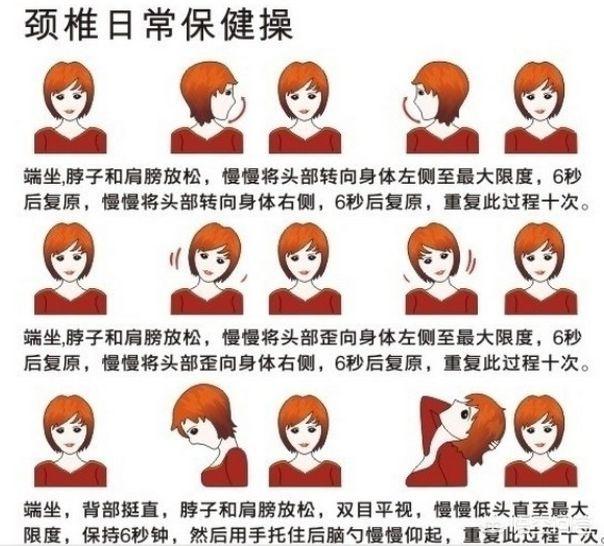
Recommend a method of self-massage: with their own two fingers of the finger belly, top on both sides of the neck after the wind pool points, other fingers fixed in the head, the right thumb to do clockwise, left thumb to do counterclockwise massage, 2 times a day, 5 minutes each time.
This is my introduction to cervical spondylosis, and I hope you find it helpful.
Cervical spondylosis patients bring a lot of trouble to people's lives, long-term non-acceptance of formal treatment will make the disease more and more serious, and even unable to work, the treatment of cervical spondylosis is not difficult, the need for patients to actively cooperate with the life of the earlier the better the treatment, so that patients away from cervical spondylosis caused by the physical and mental damage.

The best way to treat whiplash is:
1, wind swing lotus leaf, two feet stand side by side, slightly wider than the shoulder. Hands crossed at the waist, thumbs in front, waist from the left forward, back, right for the pirouette action, and then changed to the waist from the right forward, left, back pirouette. Both legs are always straight, the knees do not bend, the upper body is straight, both hands gently protect the waist, the circle of rotation can gradually increase.
2, Bow section inserting palms, stand with feet shoulder to shoulder, shoulder width apart, arms hanging down. (1) Extend the right hand forward, hold the right hand to the right, hold the elbow back, and extend the left palm to the right. Turn your body to the right into a proper lunge. (2) Place the left palm parallel to the left hand and wrap the elbow around the waist, extend the right palm to the right and left, turn to the left and become a left lunge, eyes see the palm insertion, the hand can be slightly faster.
3, massage lumbar eye feet standing side by side, hands rubbing heat, the palms of both hands to push down hard to the coccyx, and then pushed upward back to the back.
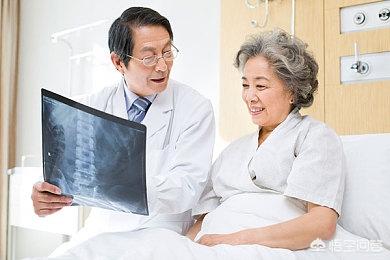
Treatment of cervical spondylosis must find a good method, do not think that the treatment is fine, in fact, usually also need to protect the spine very well, the above methods are only effective for mild patients, serious cases need to be regular medical treatment. For treatment, the occurrence of cervical spondylosis is closely related to the usual bad habits. Therefore we should also improve the bad habits in our life.
What is the best way to treat cervical spondylosis? Experts say that in the treatment of cervical spondylosis, it can't be said to be the best treatment method, but only the most suitable treatment method for the patient's condition. So, what are the treatment methods for cervical spondylosis?
The best treatment for cervical spondylosis one, massage massage therapy.
This is a commonly used treatment for cervical spondylosis. It is also the main treatment for cervical spondylosis in Chinese medicine and a more effective treatment for cervical spondylosis. It works by relieving the tension and spasm of the neck and shoulder muscles, restoring the movement of the cervical vertebrae, and releasing the adhesion of the nerve roots and soft tissues in order to relieve the symptoms.
The best treatment method for cervical spondylosis is the "One Week Orthospine" therapy.
Supine traction + interventional therapy + physiotherapy" to restore the natural physiological curve of the cervical spine and relieve nerve root compression as the core concept, on the one hand, through the supine physiological curve traction, so that the spine is subjected to a multi-angle arc force, the patient's stiffness and reverse, abnormally curved cervical spine "formation" to the position; on the other hand, through interventional therapy to promote the return of the disc herniation to eliminate the nerve root edema, and relieve nerve root compression. "On one hand, through supine physiological curve traction, the spine is subjected to multi-angle curved force, and the patient's stiffness and abnormal curvature of the cervical spine are brought back to the position; on the other hand, through interventional therapy, it promotes the retraction of intervertebral disc herniation, eliminates the edema of the nerve root, and relieves the nerve root compression.
Orthopedic experts say that the occurrence of cervical spondylosis has nothing to do with age, from the elderly to students, may suffer from cervical spondylosis, once suffered from cervical spondylosis, we must be ready for treatment, at present there are a lot of treatments for cervical spondylosis, the patient must go to a professional and regular hospitals, do not go to the roadside clinics, in order to avoid affecting the therapeutic effect.
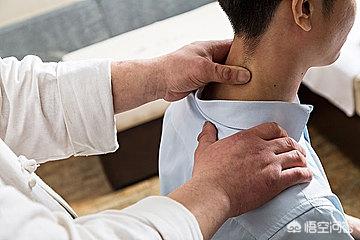
1, first of all, change the sitting posture. Posture problems are a challenge that affects the health of the cervical and lumbar spine. When sitting, pay attention to the waist straight. Can not appear hunchback phenomenon. Also appropriate activities, neck, reduce fatigue, cervical spondylosis.
2, secondly, after whiplash, do not massage treatment by yourself. It is best to go to the hospital for examination and treatment, if you sit there for two hours, stand up and walk around, in situ activities, proper rest, relaxation. The treatment of cervical spondylosis is generally not seen to have chosen surgical treatment after all, the existence of risk is there for all to see.
3,, no matter what method of treatment, cervical spondylosis at work, should avoid long-term blowing air conditioning, cervical spondylosis occurs is the result of a variety of factors, cold and damp aggravate cervical spondylosis. We should try to minimize the work in low temperature or humid environment. In order to prevent the emergence of cervical spondylosis, cervical spondylosis induced, the symptoms of neck, shoulder and back pain.
Cervical spondylosis is a progressive degenerative disease process involving the vertebral bodies and intervertebral discs of the cervical spine. This results in narrowing of the spinal canal in the center of the cervical spine (stenosis), compression of the cervical spinal cord, and the development of a spinal cord dysfunction syndrome (i.e., spondylotic cervical spondylosis.) Spondylotic spondylolisthesis occurs in 5-10% of patients with symptomatic cervical spondylolisthesis. Other clinical syndromes associated with cervical spondylosis include neck pain and cervical radiculopathy.
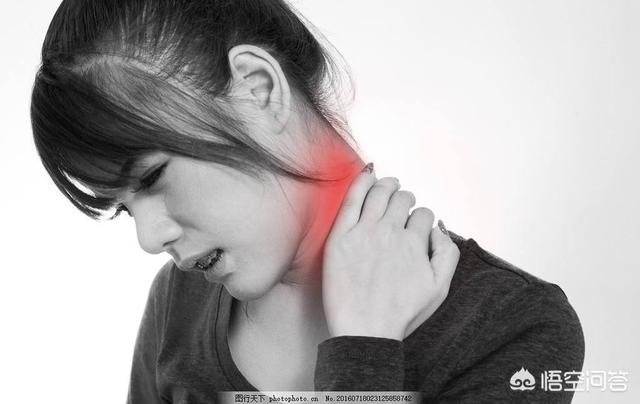
Spondylotic cervical spondylosis is the most common cause of spinal cord pathology in adults over 55 years of age and can lead to progressive disability and reduced quality of life.
Treatment for cervical spondylosis consists mainly of conservative treatment and surgery to decompress.
Conservative treatment - Non-surgical treatment usually involves some form of neck immobilization (soft neck brace or support), restriction of high-risk activities and environments (e.g., smooth surfaces, strenuous neck exercises, heavy lifting, extreme sports), and pain management. Patients should also take steps in the car to avoid whiplash injuries, such as adjusting the headrest to an occipital level position. Although some programs also include exercise and neck traction, other clinicians consider these measures contraindicated in patients with spinal cervical spondylosis.
Regarding surgery then, overall, 50%-80% of patients report postoperative improvement, while 5%-30% have worsening or subsequent deterioration.
About cervical spondylosis and the five viscera and six bowels have a relationship, common various cervical spondylosis syndrome, get the disease is not the same, the behavior of the disease is not the same and so on. ...Find regular professional Chinese medicine clinically experienced to understand the eight syllabus changes understand the yin and yang and five elements of the physiology of Chinese medicine to understand the fourteen meridians will point a variety of acupoints professional treatment of diseases of Chinese medicine treatment ...
This question and answer are from the site users, does not represent the position of the site, such as infringement, please contact the administrator to delete.